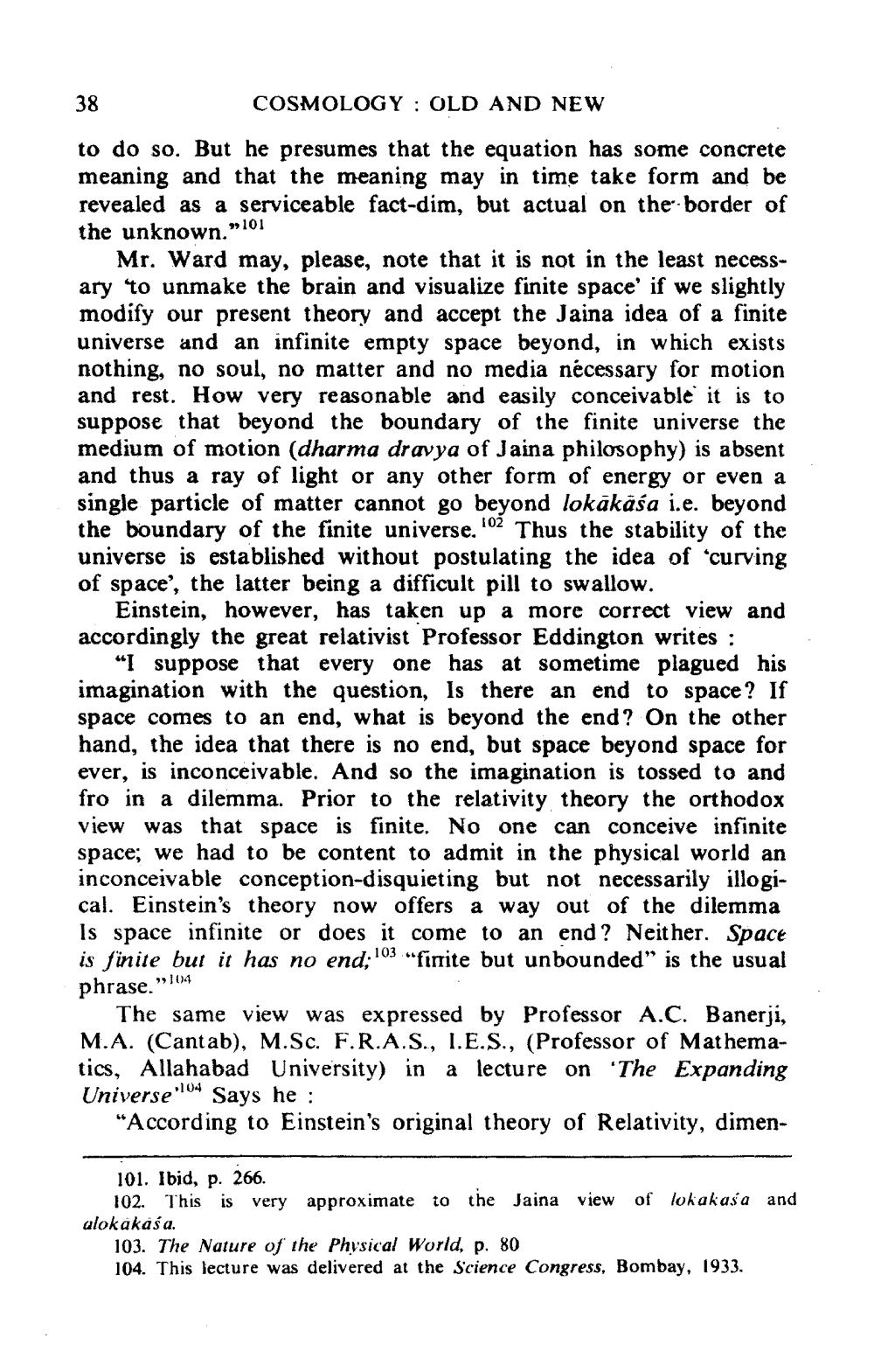________________
38
COSMOLOGY : OLD AND NEW
to do so. But he presumes that the equation has some concrete meaning and that the meaning may in time take form and be revealed as a serviceable fact-dim, but actual on the border of the unknown.”101
Mr. Ward may, please, note that it is not in the least necessary to unmake the brain and visualize finite space if we slightly modify our present theory and accept the Jaina idea of a fi universe and an infinite empty space beyond, in which exists nothing, no soul, no matter and no media nécessary for motion and rest. How very reasonable and easily conceivable it is to suppose that beyond the boundary of the finite universe the medium of motion (dharma dravya of Jaina philosophy) is absent and thus a ray of light or any other form of energy or even a single particle of matter cannot go beyond lokākāśa i.e. beyond the boundary of the finite universe. 102 Thus the stability of the universe is established without postulating the idea of 'curving of space', the latter being a difficult pill to swallow.
Einstein, however, has taken up a more correct view and accordingly the great relativist Professor Eddington writes :
“I suppose that everyone has at sometime plagued his imagination with the question, Is there an end to space? If space comes to an end, what is beyond the end? On the other hand, the idea that there is no end, but space beyond space for ever, is inconceivable. And so the imagination is tossed to and fro in a dilemma. Prior to the relativity theory the orthodox view was that space is finite. No one can conceive infinite space; we had to be content to admit in the physical world an inconceivable conception-disquieting but not necessarily illogical. Einstein's theory now offers a way out of the dilemma Is space infinite or does it come to an end ? Neither. Space is finite but it has no end; 103 "finite but unbounded” is the usual
phrase."144
The same view was expressed by Professor A.C. Banerji, M.A. (Cantab), M.Sc. F.R.A.S., I.E.S., (Professor of Mathematics. Allahabad University) in a lecture on The Expanding Universe104 Says he :
"According to Einstein's original theory of Relativity, dimen
101. Ibid, p. 266.
102. This is very approximate to the Jaina view of lokakasa and alokakasa.
103. The Nature of the Physical World, p. 80 104. This lecture was delivered at the Science Congress, Bombay, 1933.




